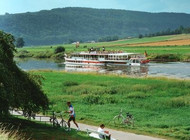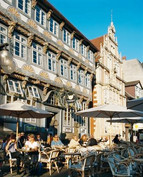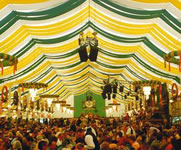
The River Weser flows from Hannoversch Münden, where the Fulda and Werra rivers come together, to Minden, where the Porta Westfalica opens up into the North German Plain. On its way it passes through a charming stretch of countryside that can certainly tell a tale or two - the Weserbergland hills. Lined by wooded hills, the Weser winds its way for 200km through a charming valley where rich merchants and princes once invested millions in a new art form from Italy: the Renaissance. But culture was very much alive on the river a thousand years ago at Corvey Abbey too. The River Weser has always been used by barges carrying a whole variety of commodities. More recently, however, the river has been taken over by the 'white fleet' steamboats of the Oberweser Dampfschifffahrt shipping company. Today, the Weserbergland hills are famous for their Romanesque churches, romantic half-timbered buildings and Renaissance architecture, as well as the legend of Baron von Münchhausen - the famous teller of tall tales, the works of Wilhelm Busch, the antics of the legendary Dr. Eisenbart and the Pied Piper of Hamlyn. The region is also the home of Frau Holle and Sleeping Beauty, fairytale characters created by the Brothers Grimm.

The Weser Renaissance, a magnificent architectural style of the 16th and 17th century that took its name from the river, is a real cultural and historical treat. Both the landed gentry and townspeople adorned their residences with elaborate facades. The Weserbergland is a region of open countryside that can be explored in a variety of ways. This tranquil landscape, which has no real urban centres to speak of, is particularly popular with walkers and cyclists. There are a number of footpaths and trails leading to rewarding destinations and picnic spots. Spring and autumn are the best times to visit this region, when the trees lining the country roads are full of cherry blossom and the flowers are in full bloom in the village gardens, or when the beech leaves start turning colour in the forests. With an abundance of mooring places, the River Weser itself is also popular with people touring on the water. The Weserbergland hill country with its forested highlands has been the inspiration for many a legend and fairytale.



